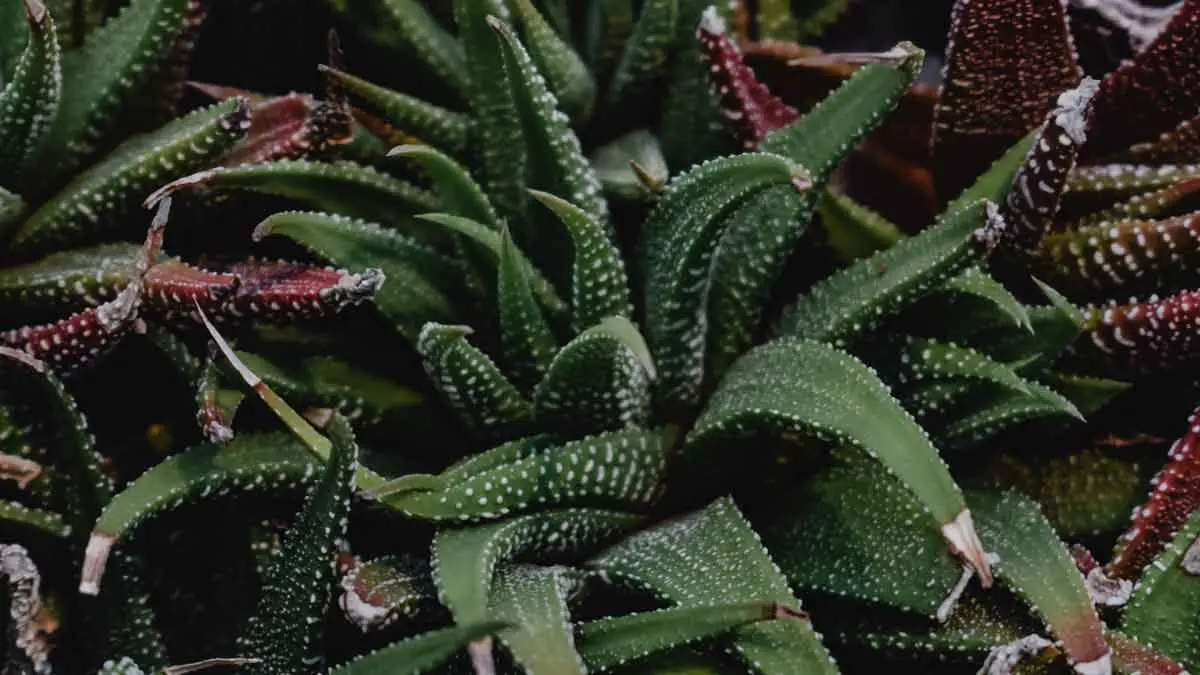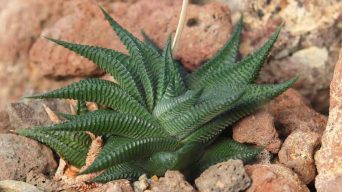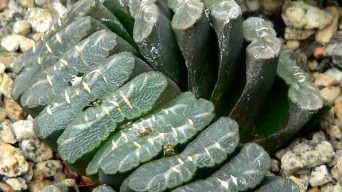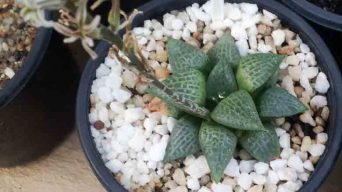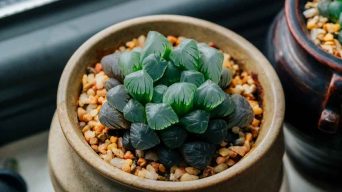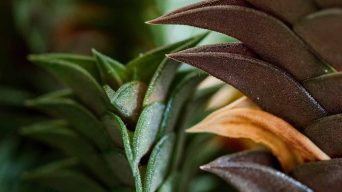Overwatering is a common issue that can harm Haworthia succulents. To save your plant, remove it from its pot and inspect the roots for any signs of rot or damage. If you notice any mushy or discolored roots, trim them off with a clean pair of scissors. Repot the plant in well-draining soil, and refrain from watering until the soil is completely dry.
Imagine watching helplessly as your Haworthia slowly drowns, its leaves turning mushy and translucent, signaling an imminent demise.
This is a dreadful sight, especially if the succulent was vibrant just a few days prior! When you overwater a Haworthia, you must act fast or risk losing your beloved plant.
This blog post will be your lifeboat in these dire straits.
Our step-by-step guide will provide invaluable insights on how to rescue your overwatered Haworthia efficiently, letting you breathe new life into your waterlogged succulent.
Statistics and Facts
- More than 60% of indoor plant deaths are caused by either overwatering or under-watering, according to a study by the University of Maryland Extension.
- A report from the University of California Botanical Garden indicates that Haworthias typically prefer their soil to dry out completely between watering; inadequate watering practices contribute to nearly 50% of all issues reported with these plants.
- A research paper published in The Journal of Plant Sciences found that over 75% of succulents, including Haworthia, respond positively to reduced watering after an episode of overwatering.
Identifying Overwatered Haworthia
Haworthias are marvelous succulents known for their resilience and ability to thrive in arid conditions. However, even these hardy plants have their limits regarding watering.
Identifying an overwatered Haworthia is crucial to prevent irreversible damage and save your beloved succulent.
One of the telltale signs of an overwatered Haworthia is the presence of drooping leaves.
When a Haworthia receives excess water, its leaves become soft and limp, losing their firmness.
They may appear translucent or feel mushy to the touch. This is because excessive moisture disrupts the osmotic balance within the plant’s cells, causing them to expand and lose turgidity.
Another key indicator of overwatering in a Haworthia is the presence of spotty or discolored leaves.
When a succulent receives more water than it needs, it struggles to absorb it efficiently and may develop brown spots on its leaves. The spots can range in size and shape, depending on the severity of overwatering.
Discoloration can also occur, with leaves appearing yellowed or pale instead of the healthy green color they should have.
It’s important not to confuse these symptoms with other issues like insects or diseases. By carefully observing your Haworthia and taking note of these signs, you can accurately identify if overwatering is the root cause.
Understanding the signs of an overwatered Haworthia is the foundation for rescuing your precious succulent.
Once you recognize that your plant is suffering from too much water, you can take steps to correct the situation and nurse your Haworthia back to health.
Drooping Leaves
Drooping leaves are perhaps the most visually apparent sign of an overwatered Haworthia.
As mentioned earlier, excess water disrupts the balance within the plant’s cells, causing them to swell and become soft and flaccid. Consequently, the leaves lose their rigidity and droop downward instead of standing upright.
If you notice your Haworthia’s leaves appearing limp and droopy, it indicates that the plant is receiving more moisture than it can handle. This could be due to overwatering or improper drainage in its potting medium.
An excellent way to confirm if overwatering is the culprit is by examining the root system.
If you carefully remove your Haworthia from its pot and observe brown or mushy roots, it further confirms that excessive watering has caused damage.
Imagine you have a lovely Haworthia on your windowsill. Its vibrant green leaves usually stand tall and firm against gravity.
However, one day, you notice that the once sturdy foliage appears wilted and hangs downwards. You gently touch the leaves, and they feel soft and mushy. These signs indicate that your Haworthia is being overwatered.
Spotty or Discolored Leaves
One noticeable sign that your Haworthia succulent may be suffering from overwatering is the appearance of spotty or discolored leaves.
If you notice any dark spots, brown patches, or yellowing on the leaves, it clearly indicates that your succulent is struggling and needs your attention.
These discolorations occur because overwatering leads to root rot, which deprives the plant of the essential nutrients it needs to thrive.
As a result, the leaves begin to show signs of stress and damage. The spots and discolorations can vary in size and intensity depending on the extent of the overwatering.
It is essential to address this issue promptly to save your Haworthia succulent from further harm.
Prevention of Overwatering in Haworthia
Preventing overwatering in Haworthia succulents is crucial for their overall well-being. Here are some practical steps you can take:
- Understand Your Plant’s Water Needs: Do thorough research about your specific variety of Haworthia, as different species may have slightly different water requirements. Most Haworthias prefer well-draining soil and infrequent watering.
- Use Well-Draining Soil: Ensure you use a well-draining soil mixture for your Haworthia. A mix of cactus potting soil mixed with perlite or pumice helps improve drainage, preventing excess moisture from accumulating at the roots.
- Water Sparingly: Succulents like Haworthia thrive in drier conditions. Water them only when the soil is completely dry, usually about once every two to three weeks, depending on the humidity and temperature of your environment. Remember, it’s better to underwater than overwater.
- Observe and Monitor: Keep a close eye on your Haworthia and observe its growth patterns. Over time, you’ll become familiar with the specific signs that indicate when it needs watering. Avoid watering on a strict schedule and tailor it to your plant’s individual needs.
- Provide Adequate Air Circulation: Proper airflow around the plant helps prevent excess moisture buildup. Ensure your Haworthia is placed in a well-ventilated area with sufficient air circulation.
Preventing overwatering is crucial for the well-being of Haworthia succulents.
To achieve this, it’s essential to understand their water needs, use well-draining soil, water sparingly, observe and monitor their growth patterns, and provide adequate air circulation.
Following these preventative measures can help create an environment that mimics their natural habitat, enabling them to thrive while avoiding the dangers of overwatering.
Adjusting Humidity and Air Circulation
Proper humidity and air circulation play vital roles in maintaining the health of your Haworthia succulent, particularly when it has been overwatered. These factors can help prevent further damage and aid in the recovery process.
When adjusting humidity levels for your overwatered Haworthia, one effective method is to provide good airflow around the plant. This can be achieved by placing a small fan near the succulent or ensuring that the area where it is grown has adequate ventilation.
The gentle breeze created by the fan or sufficient air circulation helps prevent excess moisture from lingering on the leaves and soil. As a result, it reduces the risk of fungal diseases and rot that can further harm an already stressed succulent.
In addition to improving air circulation, you can consider using a dehumidifier or humidifier to control the moisture levels in the environment.
If your Haworthia is in a high humidity region, using a dehumidifier can help reduce excess moisture in the air surrounding the plant.
On the other hand, if you are located in a dry climate, a humidifier can add some much-needed moisture to prevent the drying out of your succulent.
For instance, let’s say you have an overwatered Haworthia placed in a bathroom without proper ventilation. The enclosed space retains excessive humidity from showers, making it challenging for your succulent to recover.
By introducing proper airflow through an open window or using an exhaust fan, you provide relief by reducing moisture buildup and promoting healthier conditions for your succulent.
Remember to find an optimal balance when adjusting humidity and air circulation for your overwatered Haworthia.
Monitor changes in conditions and observe how your plant responds. Making adjustments based on its specific needs will help facilitate successful recovery.
Now that we have discussed how to adjust humidity and improve air circulation let’s explore some remedies that can help revive your overwatered Haworthia.
Remedies for Overwatered Haworthia
When battling the effects of overwatering, it’s essential to act promptly to save your Haworthia succulent. Here are a few effective remedies that can help in its recovery:
- Assess and Adjust the Watering Schedule: Evaluate how often you water your Haworthia and modify your watering routine accordingly. Allow the soil to dry out completely between waterings to prevent further damage.
- Ensure Proper Drainage: Check if the pot has adequate drainage holes and replace or drill new ones if necessary. This ensures excess water can freely escape, preventing waterlogged soil and root rot.
- Remove Excess Moisture: Gently remove the plant from the pot and carefully inspect the roots for any signs of rot or mushy sections. Trim away any damaged parts and allow the roots to dry out partially before repotting in fresh, well-draining soil.
- Optimize Sunlight Exposure: Provide your Haworthia with filtered sunlight or bright indirect light. Avoid placing it in intense direct sunlight, as this can further stress an already weakened plant.
- Adjust Soil Mix: Use a well-draining soil mix specifically formulated for succulents or cacti. These blends typically contain ingredients like perlite or coarse sand that promote proper drainage.
Remember, each case of overwatering may vary, so it’s crucial to monitor your succulent’s progress and make adjustments accordingly closely.
Patience is key when nursing an overwatered Haworthia back to health, as recovery may take time.
Best Practices for Watering Haworthia
Proper watering is crucial for the health and survival of your Haworthia succulent.
Overwatering can lead to root rot and the eventual demise of your plant, while underwatering can cause dehydration and wilting.
To strike the right balance, consider the following best practices:
- Understand Haworthia’s water needs: Haworthias are desert-dwelling succulents adapted to thrive in arid conditions. As a result, they have unique water requirements. Understanding that these plants prefer infrequent but deep watering rather than constant moisture is essential.
- Check the soil moisture: Before watering your Haworthia, always check the soil’s moisture level. Stick your finger about an inch into the soil; it’s time to water if it feels dry. If it’s still moist, hold off on watering as excess moisture can be detrimental.
- Use well-draining soil: Ensure you use a well-draining soil mix designed specifically for succulents or cacti. It should consist of materials like perlite or coarse sand, allowing excess water to flow out freely instead of getting trapped around the roots.
- Water thoroughly but infrequently: When you do water your Haworthia, ensure you give it a thorough soak until you see water draining out from the pot’s bottom holes. This ensures proper hydration and encourages healthy root growth. However, avoid watering too frequently; aim for once every 1-2 weeks during warmer months and even less during winter when the plant is dormant.
- Consider the environmental factors: Temperature, humidity levels, and sunlight exposure influence how often you should water your Haworthia. The soil tends to dry out faster in high temperatures or direct sunlight, necessitating more frequent watering. Similarly, higher humidity levels may call for less frequent watering.
With a good understanding of best practices for watering your Haworthia, let’s now delve into essential long-term care tips to ensure its overall health and longevity.
Long-Term Care Tips for Haworthia
Caring for your Haworthia succulent goes beyond proper watering. To provide optimal long-term care, consider the following tips:
- Provide adequate sunlight: Haworthias thrive in bright, indirect light. Place your plant near a window where it can receive several hours of indirect sunlight daily. Avoid exposing it to intense, direct sunlight as it can scorch the leaves.
- Maintain appropriate temperature: Haworthias prefer temperatures between 65-80°F (18-27°C). Protect them from extreme cold or heat, as sudden temperature fluctuations can cause stress and harm the plant.
- Rotate your succulent: To maintain even growth and prevent your succulent from leaning towards the light source, rotate it every few weeks. This ensures that all sides of the plant receive adequate sunlight and helps promote symmetrical growth.
- Avoid over-fertilization: Haworthias are not heavy feeders and can be easily damaged by excessive fertilizer. Use a balanced, diluted liquid fertilizer formulated explicitly for succulents during the active growing season (spring and summer). Follow package instructions carefully to avoid burning the roots.
- Monitor for pests: Watch for common succulent pests like mealybugs or spider mites. Regularly inspect your Haworthia for any signs of infestation, such as webbing or tiny white cotton-like clusters. Treat these pests promptly with organic insecticidal soap or neem oil if you notice them.
By following these long-term care tips alongside best practices for watering, you’ll be well on your way to providing optimal care for your beloved Haworthia succulent.
Remember, every plant is unique, so closely observe and adapt your care routine based on its specific needs.
Final Thoughts
Houseplants, like Haworthia, can bring beauty and life to our living spaces. However, it’s crucial to understand their specific needs and provide appropriate care to ensure their well-being.
Overwatering is a common issue, but with the right knowledge and timely action, you can save your Haworthia succulent and enjoy its beauty for years.
Regularly monitoring your plant, adjusting watering schedules, using well-draining soil, optimizing sunlight exposure, and providing proper air circulation are essential to prevent overwatering and maintain a healthy Haworthia.
Additionally, paying attention to long-term care factors such as light, temperature, rotation, fertilization, and pest control will contribute to your succulent’s overall vitality and longevity.

